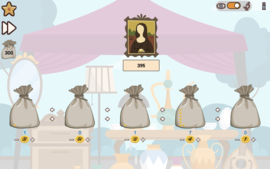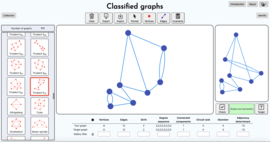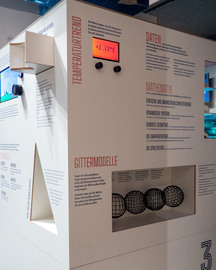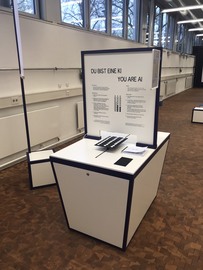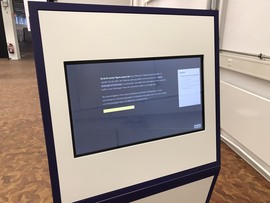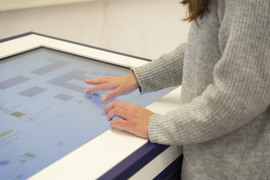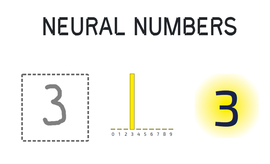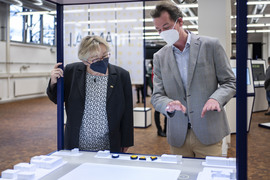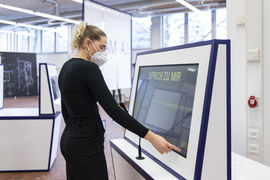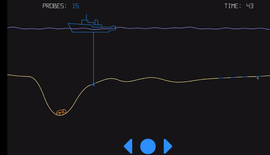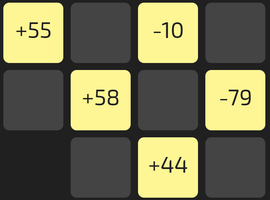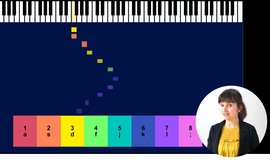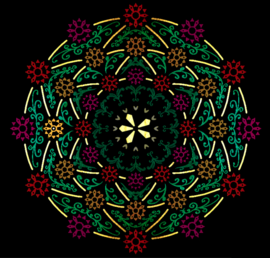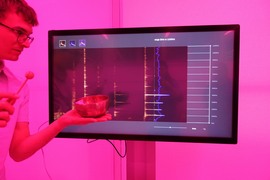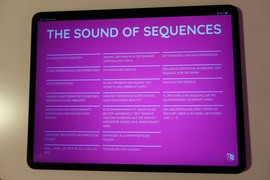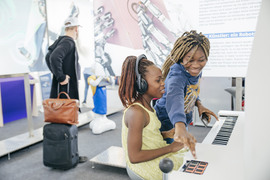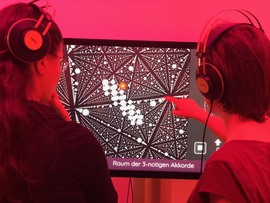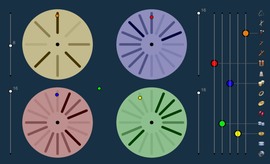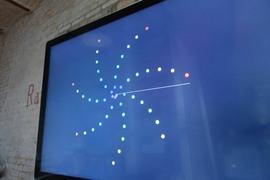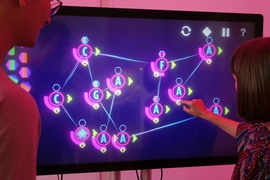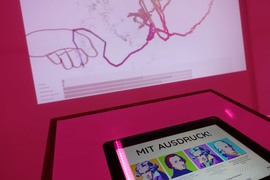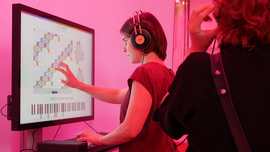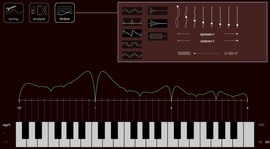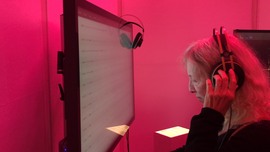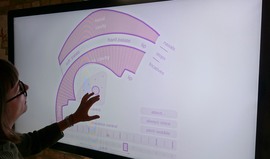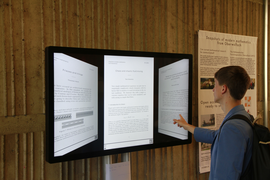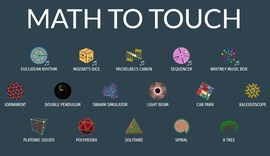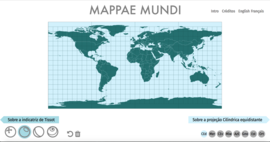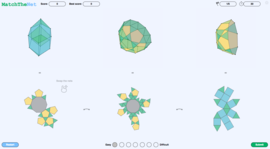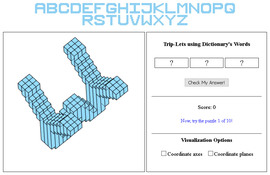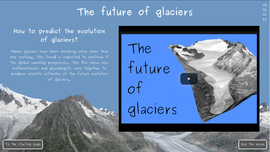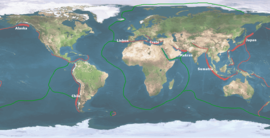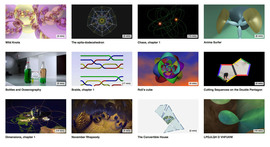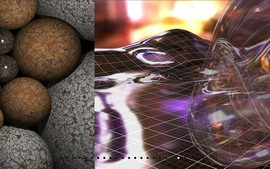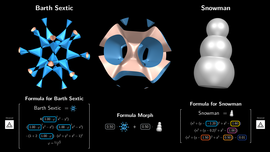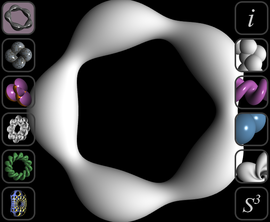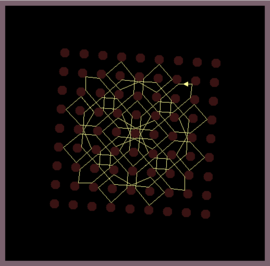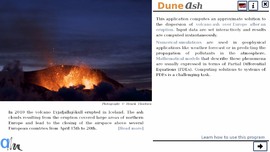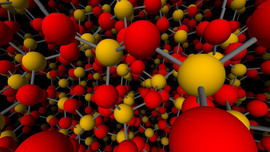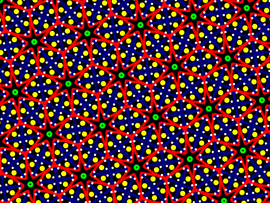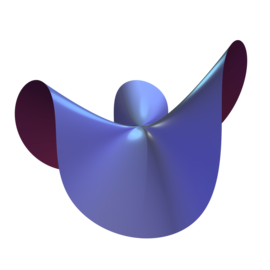There are many ideas and concepts for the mobility of the future. However, not all of them are easy to implement – new challenges often arise that need to be tested in simulations before they can be applied in real-world settings. This is what the Future Mobility Simulator is all about.
programs
Programmes
Behind the game “RRRRR” is a real-time simulation of the circular economy of smartphones. You play by placing markers on the table and observing the changes in the beautifully illustrated city.
Graphs (or networks) are geometric objects consisting of vertices and edges. We can build infinitely many graphs, but we can classify them in families depending on their properties, using what we call “invariants”. Discover how mathematicians classify graphs with this interactive app!
Do you hear the climate crying? Data sonification makes changes happening on our planet audible. The numbers are not represented in tables or diagrams but in notes. Songs are created from them!
The Gulf Stream is a current in the Atlantic Ocean that brings warmth from tropical waters to the coasts of northern Europe. As a result, temperatures are higher than in other regions similarly close to the Arctic.
Even with the fastest supercomputers, we cannot fully model all climate processes in all regions of the world. Therefore, we divide the world into small grid cells and calculate the climate processes for these cells in parallel. The size of the cells is called the resolution of the grid. A...
With a box model, we can predict the future by simulating the complex interactions between different processes. The results are often surprising, even though the connections between the processes are well-known and predictable.
The movement of balls, cars, and rockets can be explained mathematically. Similarly, the Navier-Stokes equations can explain and predict the movement of fluids, like ocean water, atmosphere gases, an oil spill, smoke, or Currywurstsoße.
General Circulation Models (GCM) are the most precise tool we have to assert that climate change is a reality. GCMs are detailed models of the whole Earth, divided into many small cells of just a few kilometers’ width.
Play as a human or as an artificial intelligence to find out how human thinking differs from how an AI processes things. In which way does the human way of playing differ from the AI’s way of playing? What is the difference between ‘knowing’...
It’s your first day in your new job. Together we will attempt to lower the crime rate of your city. Click through the story and let us dive into a topic full of questions: Where are the limits to using artificial intelligence? How important are transparency and data safety for you? What...
An AI that uses Reinforcement Learning learns through trial and error by directly interacting with its environment. It’s similar to how humans and animals learn.
Use your finger to write a number between 0 and 9 in the left box. On the right you can see as which number the AI recognizes your input.
We sit in a self-driving car, controlled by an AI. All of a sudden, something unexpected happens. How is the AI going to react? Use the buttons to choose a scenario and see what happens.
An automatic speech recognition exhibit.
Push the “Record”-button and speak into the microphone. You can speak in German or English by selecting the corresponding language before recording.
A treasure chest lies at the deepest point of the seabed. You have a limited number of tries to find it. Special probes will help you. They tell you how steep and deep the seabed is at the current position.
Let’s play a simple game. Flip the cards to reveal numbers. You have 10 turns to reach the highest possible sum (from your 10 possible flips). On each turn you can either flip a new card, or choose one of the ones you had seen on a previous flip.
Have fun pretending you’re a piano virtuoso with the help of AI. Use the 1-8 numbered keys in your keyboard or touch the colored buttons to play a full 88 key piano. The more you pretend to be a real player, the better the AI will make you...
Move through the “Space of Pentatonic Scales” and create your own impressionistic style music by playing pieces by classical composers with only five notes.
Sound and its perception has a rich mathematical structure that allows us to understand and create sounds by mixing waves. The Spectrum of Sound is an exhibit composed of two parts: a synthesizer and an analyzer. This is the Analyzer part.
Play a few notes on the piano or develop a rhythm on the drums. Try out how the Artificial Intelligence (AI) responds to your music. You can also experiment with different styles and speeds.
Dive into a multitude of topics that visualize the complex interrelations of melody, harmony and mathematics. Push the “play” button in each visualization and experience the effect of parameters.
Select an animation, press the “play” button and experiment with the parameters. Try to clap along.
Insert new nodes and connect them. Change the corresponding sound by clicking on the node and select a new note from the scale. Define the note’s duration and apply the different embellishments. You can hear the results in real time.
Take the role of a conductor. Move your hand over the sensor on the desk and play with the volume and speed of the piece you hear. Move the slider to get support from our Artificial Intelligence (AI) musician.
Explore how we can represent the notes in a logical and useful way! The Tonnetz is a pictorial representation of the notes in the plane that reveal affinities and structures between notes and on concrete music pieces.
Which sounds can be called “notes”, and used to create music? This exhibit is an experimental platform to explore the characteristics of sound and scales.
Sound and its perception has a rich mathematical structure that allows us to understand and create sounds by mixing waves. The Spectrum of Sound is an exhibit composed of two parts: a synthesizer and an analyzer. This is the Synthesizer part.
Pink trombone is a model of the human vocal tract that synthesizes human voice from scratch, controllable with your fingers.
Snapshots are short texts on aspects of modern mathematics written by researchers visiting the Mathematisches Forschungsinstitut Oberwolfach. With this Snapshot station, you can browse through all available snapshots by sliding horizontally and read the full snapshot by sliding vertically. Each...
Math to Touch is a collection of 16 small apps, each of them opening a little mathematical world to be explored.
MatchTheNet est un jeu pour un seul joueur dont les héros sont les polytopes de dimension 3. Vous y rencontrerez les cinq solides platoniques et leurs meilleurs amis.
Inspired by the cover of the book Gödel, Escher, Bach by Douglas Hofstadter, this is an interactive game to exercise three-dimensional thinking in an interdisciplinary work with English, Spanish, French and Portuguese languages. The game runs on smartphones, tablets and desktop computers.
Depuis plus d’un siècle, les glaciers alpins reculent. Cette tendance s’amplifiera si le climat se réchauffe davantage. Grâce à des modèles mathématiques, l’évolution future des glaciers peut être estimée.
Tsunamis are big oceanic waves that collide violently with the coast. Most often, tsunamis are created by earthquakes that produce a sudden change on the topography of the ocean seabed. This exhibit explains how tsunamis are modeled mathematically, and recreates simulations of historical...
Une présentation simple et élégante des films d’IMAGINARY, à utiliser dans vos expositions.
Une présentation simple et élégante des galeries d’IMAGINARY, à utiliser dans vos expositions.
Construis un poste depilotage Formula Morph et prend le contrôle du tableau de bord des instruments! Ta mission: explorer comment les surfaces algébriques changent de forme et fusionnent lorsque tu règles les touches et ajustes les manettes.
Des miroirs de forme circulaire disposés selon une grille réfléchissent les rayons de lumière en fonction des lois de l’optique géométrique. Alors qu’une position aléatoire de la source de lumière produit des structures de réflexion chaotiques, il est possible de positionner la...
Ce projet comprend cinq expériences différentes, liées aux Mathématiques de la planète Terre (MPT) : cartographie, système dynamique, Wator, températures et automates cellulaires.
Dune Ash est un programme de simulation interactif d’éruption de volcan en Europe. Vous pouvez placer un volcan, orienter le vent et étudier la dispersion du nuage de cendres.
Experience this interactive program and fly through a quartz, fluorite, or diamond crystal. You can steer a miniature spaceship through the crystal structures using your finger on a touchscreen, also in 3D.
Avec SURFER, vous pouvez appréhender de manière interactive le lien entre les formules et les formes, autrement dit entre l’art et les mathématiques. Vous pouvez écrire des équations simples qui produisent de belles images représentant des surfaces dans l’...



